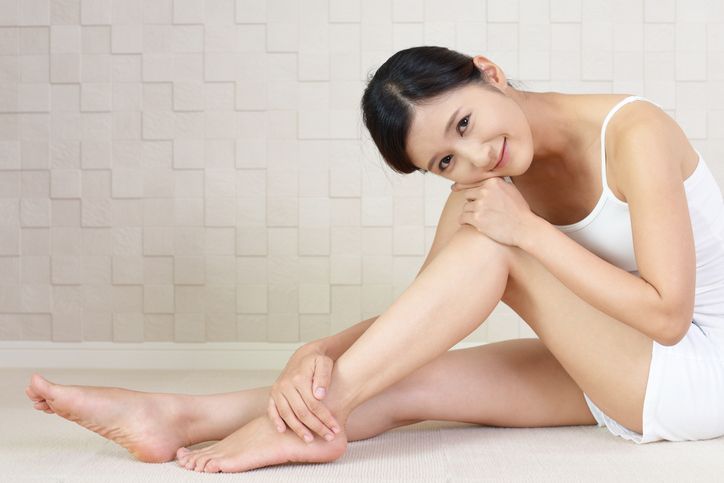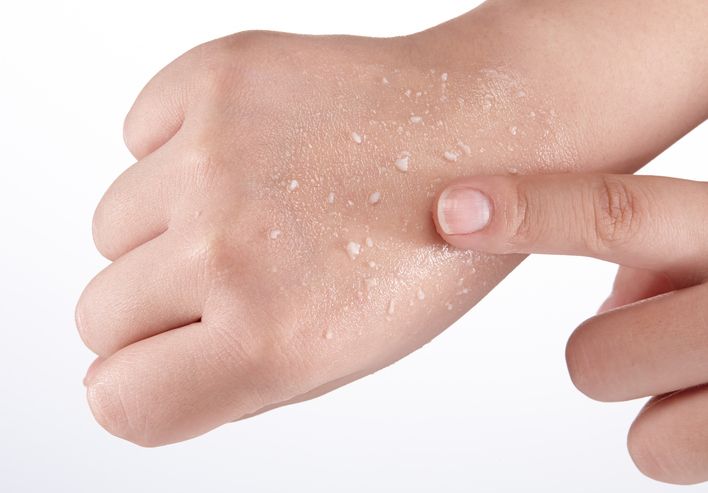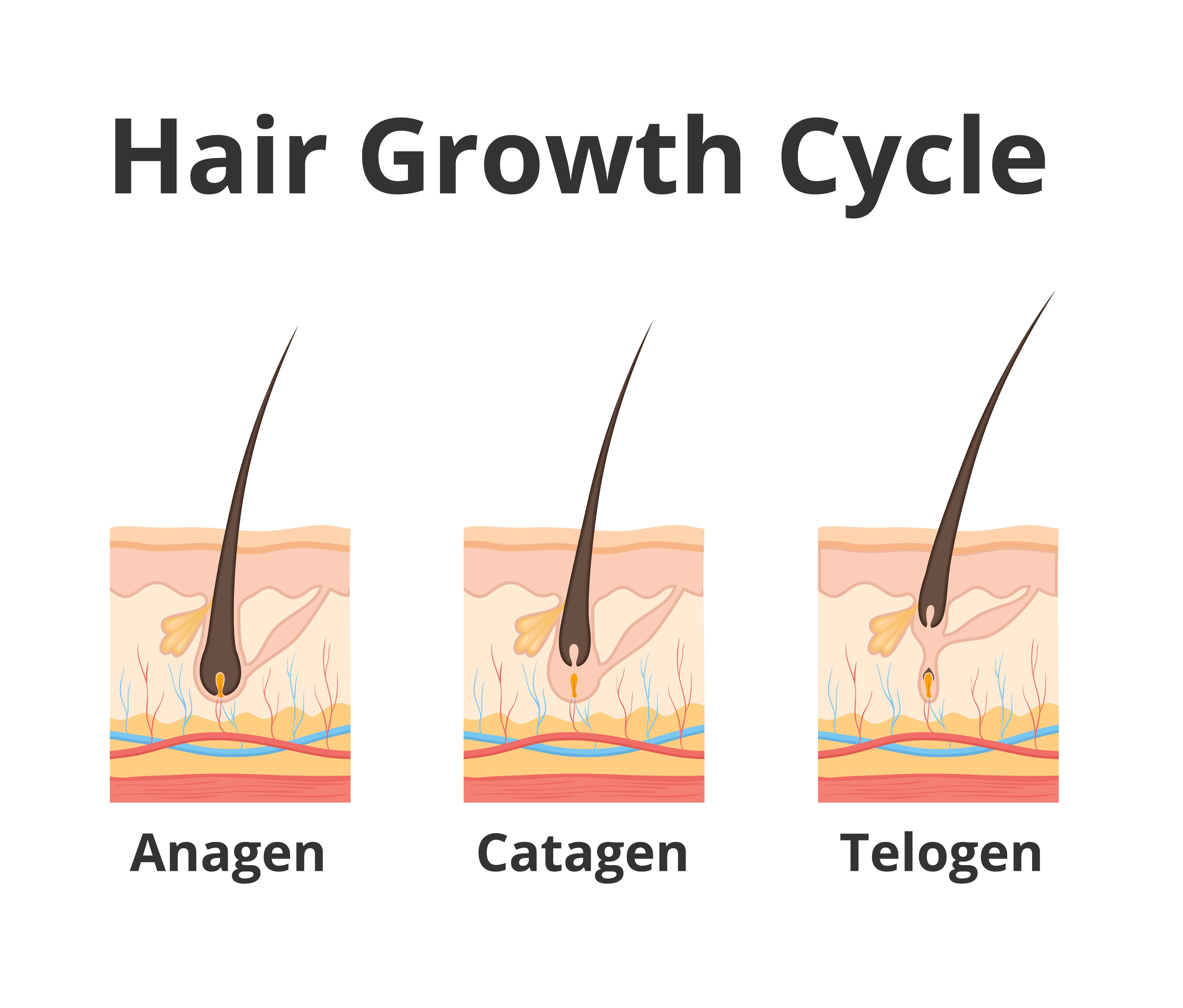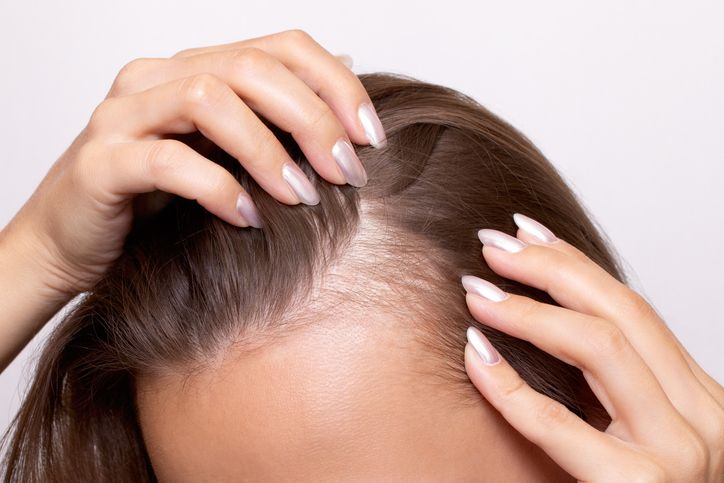- Home
- Trend
- Weight Loss Strategies
- Acne Tips
- Hair Health Information
- Blemish Removal Tips
- Acne Scar Removal Tips
- Muscle Building Techniques
- Intimate Care Tips
- Postpartum Intimate Care
- Eye Bags Wiki
- Tips for Face Slimming
- Secret of Permanent Hair Removal
- Breast Enlargement Tips
- Cure to Snoring
- Marionette Lines
- Skin-Tightening Secrets
If you do your own hair removal, you probably encountered this unwelcome side effect before: the dreaded ingrown hair bump. These small, often painful bumps occur when hairs grow back into the skin instead of outward, leading to inflammation, discomfort, and in some cases, unsightly hair cysts. While ingrown hairs can appear anywhere on the body, they are especially common in areas that are frequently shaved, such as the legs, underarms, and bikini line.
What Is an Ingrown Hair Bump?

An ingrown hair bump (sometimes called ingrown hair cyst) forms when a hair that should be growing outward instead curls back into the skin or fails to break through the skin’s surface. As a result, the hair becomes trapped under the skin, leading to inflammation and the formation of a bump. This can happen when dead skin cells clog the hair follicle, forcing the hair to grow sideways or back into the skin.
Ingrown hair bumps are more than just a cosmetic nuisance—they can cause significant irritation and even lead to infections if not properly managed. The frustration of dealing with these bumps often leads people to seek out various methods to prevent and treat ingrown hairs, with varying degrees of success.
When the hair becomes trapped, the body reacts to it as a foreign object, triggering an inflammatory response. This can cause redness, swelling, and even pus-filled bumps that resemble acne. In more severe cases, ingrown hairs can develop into hair cysts—larger, more painful lumps that require medical attention.
Why are Ingrown Hairs More Likely to Occur?
Certain factors make individuals more prone to ingrown hairs. For example, people with curly or coarse hair are more likely to experience ingrown hairs, as their hair tends to curl back into the skin more easily. Additionally, improper shaving techniques—such as shaving against the direction of hair growth or using a dull razor—can increase the likelihood of ingrown hairs. Dead skin cells that accumulate on the surface of the skin can also block hair follicles, causing the hair to grow back into the skin rather than outward.
Don't Mistake These Condition As Your Bump
Several skin conditions can be mistaken for ingrown hair bumps. Here’s a look at some of these conditions:
Folliculitis
Folliculitis is an inflammation of the hair follicles, often caused by bacterial or fungal infections. It can present as small, red bumps or pustules around hair follicles, resembling ingrown hair bumps. Unlike ingrown hairs, folliculitis is typically itchy and may be accompanied by tenderness or swelling.
Keratosis Pilaris
Keratosis pilaris is a common, benign condition where small, rough bumps appear on the skin, typically on the upper arms, thighs, or cheeks. These bumps are caused by the buildup of keratin, a protein in the skin, and can sometimes be confused with ingrown hairs. The bumps may be red or flesh-coloured and are often accompanied by dry, rough skin.
Acne
Acne, particularly comedones (blackheads and whiteheads), can resemble ingrown hair bumps. These acne lesions are caused by clogged pores and can appear as small, raised bumps on the skin. Unlike ingrown hairs, acne can occur in areas beyond where hair grows and may be associated with oily skin or acne-prone skin types.
Cysts
Cysts are sac-like structures filled with fluid or semisolid material. They can appear as lumps or bumps under the skin and can be mistaken for ingrown hairs. Common types include sebaceous cysts, which are benign and arise from blocked sebaceous glands. Cysts can be painful or tender and may require medical evaluation if they become inflamed or infected.
Hives
Hives, or urticaria, are raised, itchy welts on the skin caused by allergic reactions or other triggers. They can appear suddenly and may be mistaken for bumps caused by ingrown hairs. Hives are usually accompanied by itching and may be transient, disappearing and reappearing in different areas.
Contact Dermatitis
Contact dermatitis is an allergic reaction or irritation caused by contact with certain substances, such as allergens or irritants. It can result in red, itchy bumps or rash-like areas on the skin. These bumps may resemble ingrown hairs but are usually associated with a history of exposure to the offending substance.
Skin Tags
Skin tags are small, soft, benign growths that hang off the skin. They are usually flesh-coloured and can appear in areas where the skin folds or rubs together. While they are not typically inflamed or red like ingrown hairs, their appearance might be confused with ingrown hair bumps in some cases.
免費體驗
S6 Body Sculpting Treatment
1 Minute Self-Registration
Date should not be before minimal date
Common Techniques to Prevent and Treat Ingrown Hair Bumps

As ingrown hairs do not go away on their own, prevention is key when it comes to managing them. Here are some common methods to prevent ingrown hair bumps:
1. Shave in the Direction of Hair Growth
When you shave, always ensure you’re shaving in the direction that the hair grows. This reduces the chances of the hair being cut too short or at an angle that makes it more likely to curl back into your skin.
2. Exfoliate
Exfoliating your skin with a gentle scrub or exfoliating glove can help remove dead skin cells that might otherwise block hair follicles. This allows the hair to grow outward without obstruction.
3. Hydrate
Keeping your skin hydrated with warm water before shaving can soften the hair and skin, making it easier to shave without irritation. Using a moisturising shaving gel or cream can also reduce friction and help prevent ingrown hairs.
4. Avoid Tight Clothing
Wearing tight clothing, especially in areas prone to ingrown hairs, can exacerbate the problem by causing friction and trapping hairs against the skin.
5. Use a Sharp Razor
A dull razor can tug at the hair rather than cutting it cleanly, increasing the risk of ingrown hairs. Replace your razor regularly to ensure a smooth, clean shave.
If you’re unsure whether a bump is an ingrown hair or another skin condition, it’s a good idea to consult a healthcare professional for an accurate diagnosis and appropriate treatment.
They Still Appear? Tips in Treating Ingrown Hair Bumps
Even if you are sure that you have ingrown hair bumps, despite your best efforts, you may still experience them from time to time. Here are some ways to treat them:
Don’t Pick or Squeeze
As tempting as it may be, avoid picking or squeezing ingrown hair bumps. Doing so can introduce bacteria into the skin, leading to infection and scarring.
Warm Compress
Applying a warm compress to the affected area can help soften the skin and encourage the ingrown hair to emerge. Simply soak a clean cloth in warm water, wring it out, and place it on the bump for a few minutes.
Exfoliate Again
If the ingrown hair is visible under the skin, gently exfoliating the area can help remove the layer of skin covering the hair. This may allow the hair to break through the surface.
Use Topical Treatments
Over-the-counter creams containing ingredients like salicylic acid or glycolic acid can help exfoliate the skin and reduce inflammation, making it easier for the hair to grow out naturally.
Seek Medical Advice for Severe Cases
If an ingrown hair bump becomes painful, swollen, or infected, it’s important to see a healthcare provider. In some cases, a minor surgical procedure may be required to remove the ingrown hair or drain a hair cyst.
Want to Treat and Prevent the Root Cause? Try Perfect Medical
While the methods mentioned above can be effective in managing ingrown hairs, they often require continuous effort and may not provide a permanent solution. This is where the A3 Laser Hair Removal Treatment comes in—a revolutionary approach that addresses the root cause of ingrown hairs by targeting the hair follicle itself.
How the A3 Laser Hair Removal Treatment Works
The A3 Laser Hair Removal Treatment uses advanced laser technology to penetrate the skin and target the pigment in the hair follicles. The laser energy is absorbed by the pigment, effectively destroying the hair follicle and preventing future hair growth. By eliminating the hair follicle, the A3 treatment significantly reduces the likelihood of hair growing back into the skin and forming ingrown hair bumps.
One of the key advantages of the A3 Laser Hair Removal Treatment is its precision. The laser can be adjusted to target specific areas, making it ideal for treating both small and large regions of the body. Whether you’re dealing with ingrown hairs on your legs, underarms, or bikini line, the A3 treatment can provide a customised solution that meets your needs.
How A3 Protect Your Skin and Prevent Ingrown Hairs
The A3 Laser Hair Removal Treatment offers several benefits over traditional methods of preventing and treating ingrown hairs:
1. Long-Lasting Results: Unlike shaving, waxing, or other hair removal methods that provide only temporary relief, the A3 Laser Hair Removal Treatment offers long-lasting results. By targeting the hair follicle, the treatment reduces hair growth over time, leading to fewer ingrown hairs and smoother skin.
2. Reduced Risk of Ingrown Hairs: Because the A3 treatment destroys the hair follicle, it significantly reduces the risk of hairs growing back into the skin. This makes it an excellent option for individuals who are prone to ingrown hairs and hair cysts.
3. Smoother Skin: In addition to preventing ingrown hairs, the A3 treatment can improve the overall texture and appearance of your skin. By eliminating unwanted hair and reducing irritation, the treatment leaves your skin feeling smoother and looking more radiant.
4. Minimal Discomfort: The A3 Laser Hair Removal Treatment is designed to be gentle on the skin, with minimal discomfort during the procedure. Most patients report only a slight tingling sensation, and the treatment is quick, with sessions lasting only a few minutes to an hour, depending on the area being treated.
5. Safe for All Skin Types: The A3 Laser Hair Removal Treatment is suitable for all skin types, including those with sensitive skin. The advanced laser technology can be adjusted to accommodate different skin tones and hair types, ensuring effective and safe treatment for everyone.
免費體驗
S6 Body Sculpting Treatment
1 Minute Self-Registration
Date should not be before minimal date
Long-Term Benefits of the A3 Laser Hair Removal Treatment
One of the most significant advantages of the A3 Laser Hair Removal Treatment is its ability to prevent future ingrown hairs. By targeting and destroying the hair follicle, the treatment reduces the number of hairs that can grow back into the skin, effectively preventing the formation of ingrown hair bumps. This long-term benefit means that you can enjoy smoother, hair-free skin without the constant worry of ingrown hairs reappearing.
Addressing Hair Cysts
For individuals who experience hair cysts—larger, more painful bumps that form when an ingrown hair becomes trapped under the skin—the A3 Laser Hair Removal Treatment can provide relief. By reducing the number of ingrown hairs, the treatment minimises the risk of developing hair cysts, allowing you to maintain clear, healthy skin.
Improving Skin Texture and Appearance
In addition to preventing ingrown hairs and hair cysts, the A3 Laser Hair Removal Treatment can enhance the overall texture and appearance of your skin. The treatment helps to reduce irritation, redness, and inflammation caused by ingrown hairs, leaving your skin looking smoother and more even-toned. Over time, you’ll notice an improvement in your skin’s texture, with fewer bumps and a more polished appearance.
Cost-Effective in the Long Run
While the initial cost of the A3 Laser Hair Removal Treatment may be higher than traditional hair removal methods, it is a cost-effective solution in the long run. With the A3 treatment, you’ll experience longer-lasting results, reducing the need for frequent shaving, waxing, or other temporary hair removal methods. This not only saves you time but also reduces the ongoing costs associated with hair removal products and treatments.
Boosting Confidence
For many individuals, the appearance of ingrown hair bumps can be a source of embarrassment and self-consciousness. No matter the affected area, the A3 Laser Hair Removal Treatment can help boost your confidence by providing a long-term solution to these common skin issues.
Why Wait for Smooth Skin? Say Goodbye to Ingrown Hair Bump Today!
Ingrown hair bumps and hair cysts can be frustrating and painful, affecting both your appearance and your confidence. While there are various methods to prevent and treat ingrown hairs, many of them provide only temporary relief and require ongoing effort. The A3 Laser Hair Removal Treatment offers a revolutionary solution by targeting the root cause of ingrown hairs and providing long-lasting results. With smoother, clearer skin, you’ll feel more comfortable and confident in your appearance, whether you’re wearing a swimsuit, shorts, or a sleeveless top. Come witness the changes by booking your trial today!
A3 Laser Hair Removal Treatment免費體驗
S6 Body Sculpting Treatment
1 Minute Self-Registration
Date should not be before minimal date
FAQ

1. How do you prevent ingrown hairs from forming?
To prevent ingrown hairs, you should exfoliate your skin regularly to remove dead skin cells that can block hair follicles. Shaving in the direction of hair growth and using a sharp razor can also help. Additionally, preparing your skin with warm water before shaving and moisturising afterward can reduce the risk of hairs curling back into the skin.
2. What does an ingrown hair bump look like, and how do you identify it?
An ingrown hair bump looks like a small, raised, red or dark bump on the skin, often resembling a pimple. Sometimes, you can see the hair trapped under the skin. Ingrown hairs are more likely to develop in areas where hair is coarse or curly, such as the beard, legs, or bikini line.
3. What are vellus hair cysts, and how do they differ from ingrown hairs?
Vellus hair cysts are small, benign bumps that occur when vellus hairs (fine body hairs) become trapped beneath the skin. Unlike ingrown hairs, which are caused by hairs curling back into the skin, vellus hair cysts result from hair follicles being blocked by skin debris. Both conditions can be treated similarly, often involving gentle exfoliation and warm compresses.
4. How do you treat an ingrown hair cyst that has become infected?
If an ingrown hair cyst becomes infected, it may become swollen, painful, and filled with pus. To treat it, you should clean the area with warm water and mild soap, apply a warm compress to help the cyst drain, and avoid picking at it. In some cases, you may need to see a healthcare provider for antibiotics or drainage.
5. Why are some people more likely to get ingrown hairs?
Some people are more likely to get ingrown hairs due to factors such as having curly or coarse hair, which is more prone to curling back into the skin. Shaving too closely, waxing, or wearing tight clothing can also increase the likelihood of ingrown hairs. Exfoliating regularly and using proper shaving techniques can help reduce the risk.








